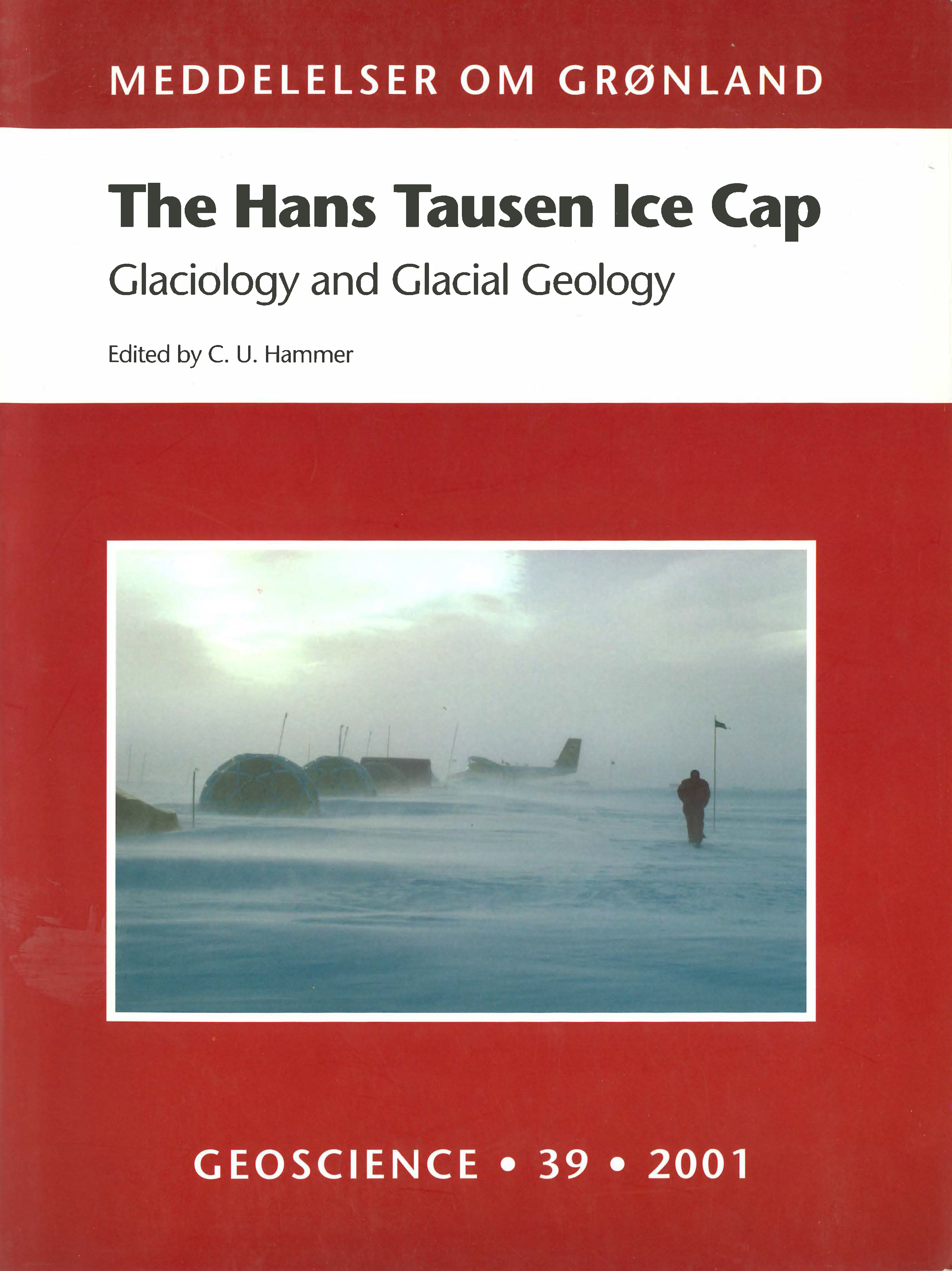Surface movement and mass balance at the Hans Tausen drill site determined by use of GPS
DOI:
https://doi.org/10.7146/moggeosci.v39i.140227Abstract
During the deep drilling at Hans Tausen Iskappe in Peary Land, North Greenland, the ice cap has been mapped with GPS. Kinematic GPS and ice penetrating radar measurements were done at the southeast dome extending to approximately 3 km from the drill site at the top of the dome, 82.5°N; 37.5°W (Gundestrup et al. 2001). Furthermore a strain net was established consisting of a center pole at the top of the dome and three rings, each of eight poles, at distances 0.3, 1.5, and 3.0 km from the center.
The bottom and surface topography, ice surface velocities from the strain net and precipitation data were used to calculate the present mass balance of the dome. The present mass balance of the dome was found to be +0.04±0.02 m of ice/year, i.e. the ice thickness at the dome increases with a rate of about one third of the annual accumulation. The result is highly consistent and independent on assumptions regarding the ice flow. Our result shows that the central part of the ice cap is far from steady state, implying that simple models cannot be used to determine the time scale of the ice core and the thinning of annual layers.
Downloads
Published
How to Cite
Issue
Section
License
Coypyright by the authors and the Commision for Scientific Research in Greenland / Danish Polar Center. No parts of the publications may be reproduced in any form without the written permission by the copyright owners.


